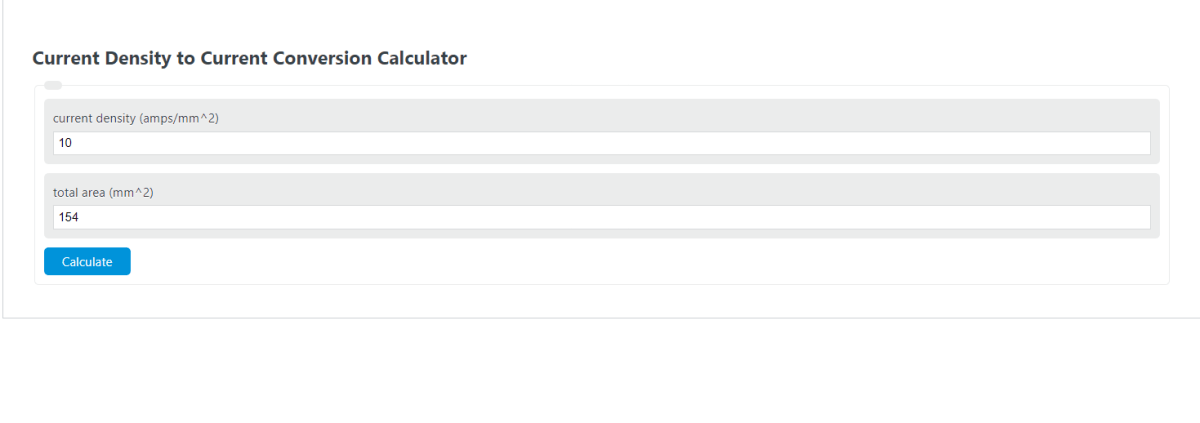Enter the current density (amps/mm^2) and the total area (mm^2) into the calculator to determine the Current From the Current Density.
- All Electrical Calculators
- Current Density Calculator
- Current Efficiency Calculator
- Current Imbalance Calculator
Current From Current Density Formula
The following formula is used to calculate the Current From Current Density.
I = ID * A
- Where I is the Current From Current Density (amps)
- ID is the current density (amps/mm^2)
- A is the total area (mm^2)
To calculate the current from current density, multiply the current density by the total area.
How to Calculate Current From Current Density?
The following two example problems outline how to calculate the Current From Current Density.
Example Problem #1:
- First, determine the current density (amps/mm^2). In this example, the current density (amps/mm^2) is measured to be 50.
- Next, determine the total area (mm^2). For this problem, the total area (mm^2) is calculated to be 12.
- Finally, calculate the Current From Current Density using the formula above:
I = ID * A
Inserting the values from above and solving the equation with the imputed values gives:
I = 50 * 12 = 600 (amps)
FAQ
What is current density and why is it important?
Current density is a measure of the electric current (flow of electric charge) per unit area of cross-section. It is important because it helps in understanding how evenly the current is distributed over a conductor or an area, which can affect the performance and safety of electrical systems.
How does the area of a conductor affect its current carrying capacity?
The area of a conductor directly affects its current carrying capacity. A larger cross-sectional area allows more electrons to flow, which means the conductor can carry more current. This is why power cables are thicker compared to wires used for smaller devices.
Can the formula for calculating current from current density be used for any type of conductor?
Yes, the formula I = ID * A can be used for any type of conductor, regardless of its shape or material, as long as you know the current density (ID) and the total cross-sectional area (A) of the conductor. However, the specific values for current density might vary depending on the material’s conductivity and the application.
